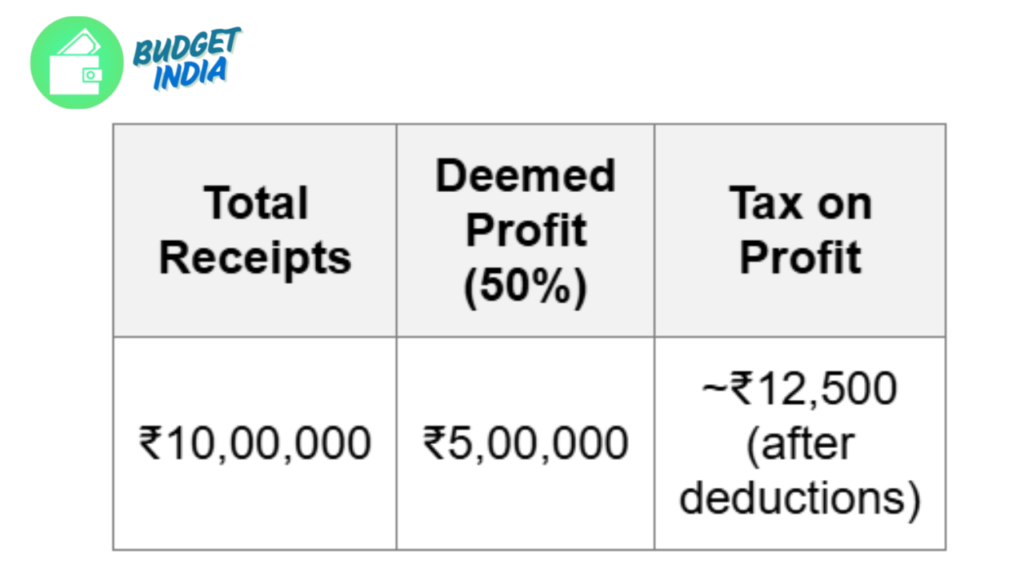Let’s face it — freelancing offers freedom, flexibility, and the thrill of being your own boss. But once the invoices start rolling in, the realities of freelancer taxation begin to surface. Clients start deducting TDS before you even see the full payment, and suddenly, the simplicity of being a solo worker turns into a maze of compliance, paperwork, and financial planning. Understanding how freelancer taxation works isn’t just helpful — it’s essential if you want to keep your hard-earned money from slipping through the cracks.
Your client just sent you ₹90,000.
But your bank only shows ₹81,000.
Why? Because of something called TDS — Tax Deducted at Source. And in the world of freelancer taxation, it’s unavoidable.
Let’s break it down without the jargon.
- What Is TDS for Freelancers?
- TDS Rates for Freelancers in FY 2025–26
- Who Exactly Falls Under “Professional Services”?
- The ₹30,000 Confusion — Cleared
- What Happens If Clients Don’t Deduct TDS?
- How to Track and Claim TDS Deductions
- How Do Freelancers File ITR with TDS?
- Presumptive Taxation Under Section 44ADA
- In Conclusion
- Frequently Asked Questions:
What Is TDS for Freelancers?
TDS, or Tax Deducted at Source, is the government’s way of collecting tax before the money ever reaches your hands. It applies when clients pay for your services — especially if those services fall under “professional or technical” categories.
If the total amount paid to you by a client in one financial year crosses ₹30,000, they are legally required to deduct tax and deposit it with the government under your name.
Yes, even before you see a single rupee in your account.
TDS Rates for Freelancers in FY 2025–26
If you’re offering services like writing, designing, marketing, programming, or consulting — you’re classified as a professional under Section 194J of the Income Tax Act.
Here’s what that means for you:
| Income Source | Applicable Section | TDS Rate (2025–26) |
|---|---|---|
| Freelance Professional Services | Section 194J | 10% |
| No PAN Provided | Section 206AA | 20% |
So if you raise an invoice for ₹50,000, your client will deduct ₹5,000 as TDS and pay you the remaining ₹45,000.
And no, this doesn’t mean you’re losing money. That ₹5,000 is credited against your final tax liability. You’ll either adjust it during return filing or claim a refund if you’ve paid more than required.
Who Exactly Falls Under “Professional Services”?
Here’s where things get interesting. The definition isn’t limited to lawyers and doctors anymore.
In the digital economy, the following professions are all covered under freelancer taxation:
- Web developers and app designers
- Content creators and writers
- Digital marketers and SEO consultants
- YouTubers and podcasters (if offering paid services)
- Voice artists, animators, and illustrators
- Freelance finance, tech, or business consultants
If your work involves skill and intellect, it likely qualifies as a professional service.
The ₹30,000 Confusion — Cleared
There’s a common myth that TDS applies only if a single invoice crosses ₹30,000.
Wrong.
The rule is cumulative. That means if you bill a client ₹8,000 each month, and by the fourth month your total crosses ₹30,000, the TDS rule activates. From that point on, every future payment must be subject to TDS.
What Happens If Clients Don’t Deduct TDS?
Here’s the hard truth: the responsibility ultimately falls on you.
If your total tax liability for the year exceeds ₹10,000, you’re expected to pay advance tax in quarterly instalments — whether TDS has been deducted or not.
If you skip it? You’ll be liable for interest under Sections 234B and 234C for late or insufficient payments.
How to Track and Claim TDS Deductions
Let’s say your clients deducted TDS. Now how do you know it actually reached the government?
You can verify it easily through:
- Form 26AS – This statement shows all TDS entries recorded against your PAN.
- AIS (Annual Information Statement) – A more detailed view of your financial transactions.
- Form 16A – TDS certificates issued by clients to confirm deductions.
Always compare your invoices with these records to make sure the TDS claimed matches the amount actually credited by your clients.
How Do Freelancers File ITR with TDS?
Here’s the simplified process:
- Total up your freelance income for the year.
- Subtract legitimate business-related expenses (software subscriptions, home office costs, gadgets, etc.).
- Compute the net taxable income.
- Use the TDS already deducted as a credit.
- Pay any remaining tax or claim a refund if extra TDS was deducted.
Most freelancers use ITR-3 (normal filing) or ITR-4 (if under presumptive taxation).
Presumptive Taxation Under Section 44ADA
There’s an easier path if your total receipts don’t exceed ₹75 lakh (new limit as per Budget 2025).
You can choose presumptive taxation, where the government assumes 50% of your receipts as profit and taxes you only on that.
Here’s a quick example:
| Total Receipts | Deemed Profit (50%) | Tax on Profit |
|---|---|---|
| ₹10,00,000 | ₹5,00,000 | ~₹12,500 (after deductions) |
This method saves you from maintaining books of accounts and can simplify both accounting and compliance.
But remember, TDS still applies. Clients must continue to deduct it even if you choose presumptive taxation.

In Conclusion
Freelancing in India is growing faster than ever — but freelancer taxation is still a grey area for many. TDS, while inconvenient, is just part of the game. The sooner you understand how it works, the better you’ll manage your cash flow, refunds, and tax planning.
So the next time your payment is a bit short — don’t panic. That 10% isn’t lost. It’s just sitting with the government, waiting to be adjusted or refunded — if you play your cards right.
Frequently Asked Questions:
Q1: Can I avoid TDS if I earn below ₹2.5 lakh?
TDS will still be deducted if payments exceed ₹30,000 per client. But if your total income is below the taxable threshold, you can file a return and claim a full refund.
Q2: What if the client forgets to deduct TDS?
They may be penalised, but you still need to pay advance tax on time to avoid interest charges.
Q3: Is GST also required for freelancers?
In Freelancer Taxation, GST registration is mandatory if turnover exceeds ₹20 lakh (₹10 lakh in some states), but GST and TDS are separate compliance requirements
Q4: Can I request a lower TDS rate?
Yes. File Form 13 to request a certificate for lower or NIL deduction if your tax liability is expected to be minimal.
Q5: How often should I pay advance tax?
Advance tax is paid quarterly: 15% by June 15, 45% by September 15, 75% by December 15, and 100% by March 15.






Leave a Reply